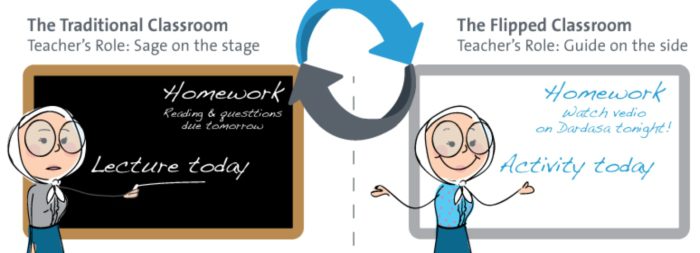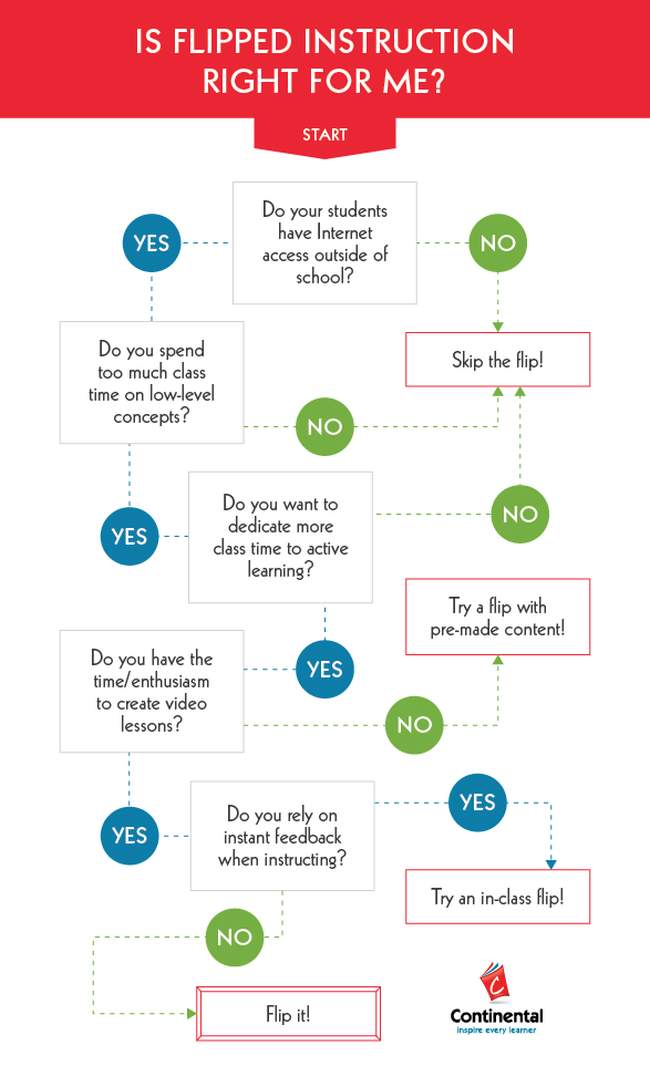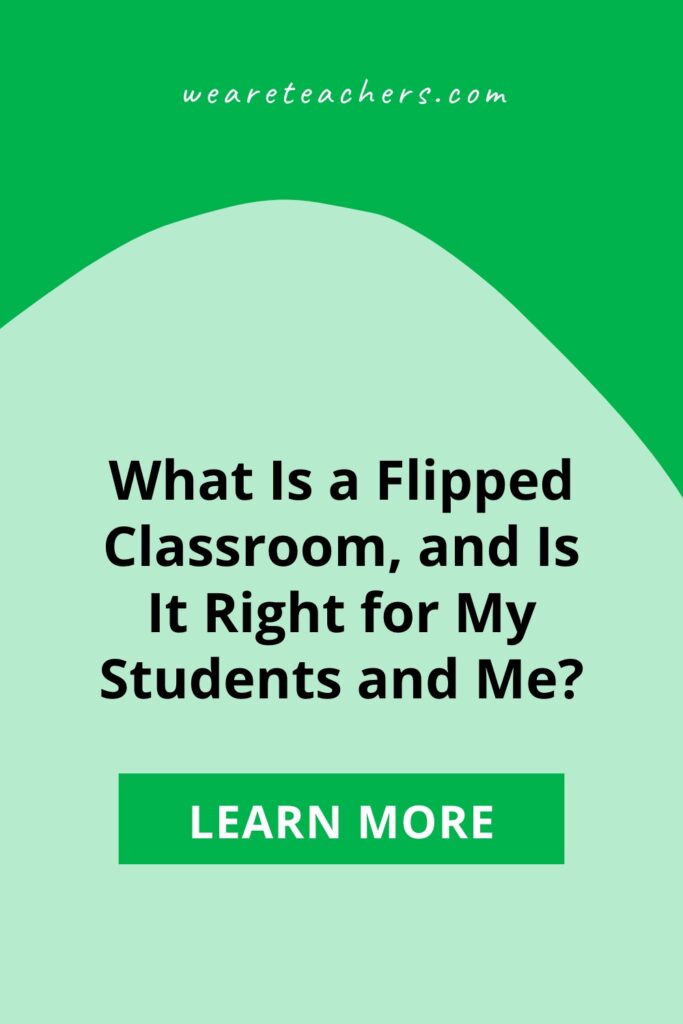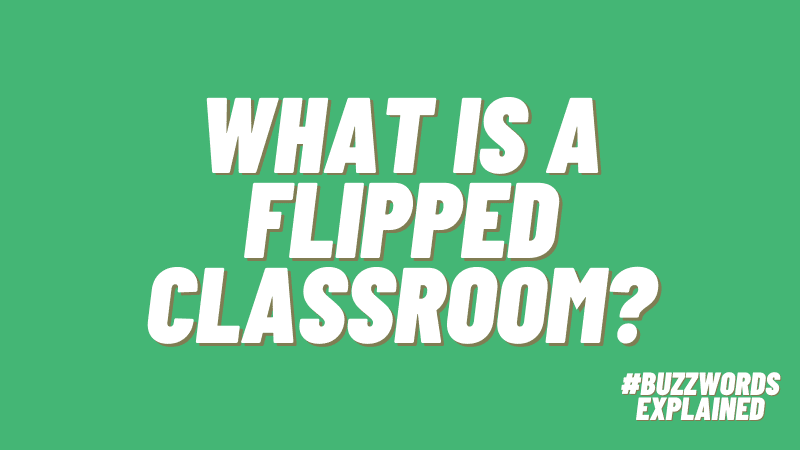If you’ve been to an education conference in the last few years, there were likely at least a few sessions on flipped classrooms. This model has been trending over the last decade or two, after two chemistry teachers pioneered the approach. Their popular book, Flip Your Classroom: Reach Every Student in Every Class Every Day, spawned a movement. But what exactly is a flipped classroom? Does it work for everyone? Here’s what you need to know.
What is a flipped classroom?
Source: University of Texas at Austin
According to Harvard University: “A flipped classroom is structured around the idea that lecture or direct instruction is not the best use of class time. Instead students encounter information before class, freeing class time for activities that involve higher order thinking.”
In a traditional classroom, instruction time is teacher-led, via lectures or other passive activities. Students then complete review work and assignments like papers or projects at home. In a flipped classroom, students read texts or watch prerecorded lectures at home. Classroom time is used for deeper learning activities, like discussions, labs, and one-on-one time for teachers and students.
Many classrooms already use some form of the flipped model. For example, in ELA classes, students are often expected to read books at home, then participate in classroom discussions that expand on their reading. College classes expect students to read texts outside of class, then participate in labs and other hands-on activities in the classroom.
What a flipped classroom isn’t

Source: Learning Personalized
There are a lot of misconceptions about flipped classrooms. One of the most prevalent is that video learning is “replacing” teachers. In a true flipped classroom, that’s not the case at all. In fact, teachers are often able (and required) to do a lot more work during class time. They tailor instruction to individual students and needs, and oversee complex labs, discussions, and projects.
What are the benefits of flipping a classroom?

Source: College of Education, University of Minnesota
Why is a flipped model worth trying? Here are some of the ways that teachers and students benefit:
- Flexibility: Students can learn at their own pace. If they need to rewind part of a lecture and listen to it again, or spend more time on one section of a book than another, they can do that freely on their own time.
- Higher-level learning: Since classroom time isn’t dedicated to lower levels of learning like remembering or understanding, kids instead get to spend more time applying, analyzing, and evaluating material. They can do this in groups or with guidance from their teachers.
- Efficiency: Teachers don’t need to deliver the same lecture over and over again to different classes throughout the day. They can record their lecture once, then spend planning and instructional time on more involved activities that deepen student learning.
What are the challenges?
Like any instructional model, flipped classrooms come with their own challenges, including:
- Inequity: Though this model seeks to allow students a more individualized learning experience, it also assumes certain things that may not be true for every kid. A student must have access to the technology they need at home, along with enough time to truly be able to absorb the material. Kids with difficult home lives may not be able to dedicate enough time to learning material in advance, leaving them too far behind to catch up in class.
- Too much screen time: We’re already feeling concerned about the amount of time kids spend staring at screens. Does it make sense to turn every evening into a series of recorded lectures for kids to watch? This could become the case if every classroom is flipped.
- Different learning styles: When a teacher lectures in person, they can seek feedback along the way, answering questions and tailoring responses. If they notice students don’t seem to understand a concept presented one way, they can try another (something that’s especially important in math). It’s important to teach students to take detailed notes while they watch or read, and follow up with their teacher the next day.
Is a flipped classroom model for me?
Some subjects, age levels, and teachers are well-suited to this model, and others aren’t. That’s OK! You might even decide to incorporate this model for some parts of your instruction and not others. For instance, one teacher has developed an “in-class flip” that might work well for you.
Here are some questions to ask yourself as you decide:
- Do your students spend a lot of time in passive learning in the classroom, such as listening to lectures, watching videos, or reading texts?
- Would you like to have more in-class time for hands-on activities, group-based project work, labs, and/or discussion and debate?
- Do you wish you had more time to spend one-on-one with students during class?
- Are you looking for ways to make learning more flexible and individualized for students?
The more of these questions you answer “yes” to, the more likely it is a flipped classroom will work for you. This chart may also help you decide:

Source: Continental Press
How do I get started?
If you’re ready to give this model a try, here are some resources to help you get started.
- 12 Tips, Tricks, and Tools for Creating Amazing Flipped Classroom Videos
- How To Implement a Flipped Classroom Model (Michigan State University)
- How Do You Flip a Class? (University of Texas)
- 7 Steps to a Flipped Classroom (TeachThought)
- Flip Learning: Getting Started
- Flipping the Elementary Classroom (Notes From the Portable)
Have more questions about the flipped classroom model? Come ask for advice and exchange ideas in the WeAreTeachers HELPLINE group on Facebook.
Plus, check out 18 Effective Ways To Scaffold Learning in the Classroom.


